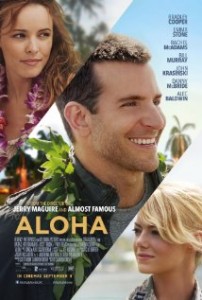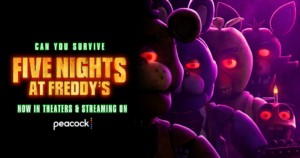White Picket Fence: the Invisible Boundary Segregating Hollywood’s Actors

Although the Hawaiian-inspired Disney classic Lilo & Stitch taught a generation that the word ‘ohana’ meant family, and family meant that no one gets left behind, this message has gotten lost in translation along the way. The new Cameron Crowe romantic comedy Aloha, set in Hawaii, features a love triangle and a star-studded cast: Bradley Cooper, Emma Stone, Rachel McAdams, Bill Murray, John Krasinski, Danny McBride, and Alec Baldwin. However, there is definitely something unusual in this lineup; no one mentioned is even of slight Hawaiian descent. Emma Stone’s character, Allison Ng, is said to be “a quarter Hawaiian and a quarter Chinese,” but this is hard to believe given her features. After taking a closer look at her nationality, the self-proclaimed American actress is of no Asian or Pacific Islander descent, but rather Swedish. This begs the question: did the director play into the cultural phenomenon of “whitewashing” his actors?
Introduced in early Hollywood as early as in the 1930s, “whitewashing” or the practice of giving Caucasian actors preferential treatment over actors of color, was typically used as a crude humor technique. This offensive comedy genre was first seen in flicks such as the Charlie Chan movies in 1931, in which Warner Oland would put on yellow makeup in an attempt to look like his Chinese character and speak with an exaggerated accent. Since then, “whitewashing” has evolved into a more subtle demon. In this current society, it is not used to make fun of other races, but rather to erase them from the industry. For example, in The Prince of Persia, Swedish-American actor Jake Gyllenhaal played the title character. This was also seen in The Lone Ranger, in which Johnny Depp’s skin was tanned so that he could play the Native American sidekick Tonto. Directors have even gone as far to change a character’s history when making casting choices, as Ron Howard did in the 2001 film A Beautiful Mind; Caucasian actress Jennifer Connolly won an Oscar for her portrayal of Alice Nash, whose real life figure was born in El Salvador. Hollywood is straddling the line between creative license and racism, and its future does not look favorable.
Released on May 29th, Aloha has already received harsh criticisms, both for its plot and for its casting. There has been a public outcry from celebrities and simple consumers alike, who are disgusted by the film’s blatant ignorance of the culture it claims to be “respectfully showcasing.” A visit to any United States History class can prove that Hawaiians and continental Americans have not always had the best track record, as companies like Dole exploited the natives, their culture, and their land for its product in the twentieth century. The one-hundred percent white cast in this supposedly Hawaiian film is not only irrational, but also tasteless. Despite the nearly forty percent of the Hawaiian population comprised of people of Asian descent, it is hardly even surprising that they have not received their deserved representation, as less than seven percent of on-screen actors in American media are Asian.
When asked to comment on the racial controversy, actress Rachel McAdams defended Crowe by saying that “people are always going to be sensitive.” Crowe then commented that he “certainly knows the power of ‘aloha’ and what ‘aloha’ means,” representing his meager attempt at understanding the intricate Hawaiian culture. However, what he might not understand is that the word ‘aloha’ in the traditional Hawaiian language means hello, but it can also mean goodbye. It is time for directors, actors, and consumers alike to finally see all of the errors in Hollywood’s ways and to say aloha to Aloha.








